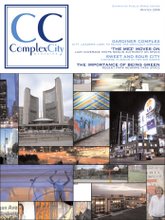Taking the tag off Toronto
 BY SEAN BAILEY
BY SEAN BAILEY
For two months in the summer, student workers along a neighbourhood stretch in Toronto work to clean up and help beautify their city. Using a pressure washer and other cleaning materials, they spend from two minutes up to two days working to remove graffiti “tags.”
“It depends on the size, it depends upon the surface of the wall, whether it’s porous, non-porous, metal,” said Evonne Hassock, program director for Community Centre 55. “It depends upon how long the graffiti’s been there and If they use a lead or metal based paint. You could have one little piece, but because of the surface and the kind of spray that was used it could take an hour.”
The centre, established in 1976, is run by the community and is a government agency that receives $20,000 in administrative funding annually. These students work along the stretch of Toronto bounded by Victoria Park and Coxwell avenues and from Lake Ontario to the north city limits.
“We hope to remove all graffiti in our geographical area,” Hossack said. “It increases property values for homeowners and business owners. It’s visually more appealing and people can feel more proud of their community when it’s clean.”
Dr. Douglas Frayn, retired associate professor of psychiatry at the University of Toronto, says while there is both good and bad graffiti, in the end, beauty is in the eye of the beholder. However, he agrees if the graffiti is unwarranted, then it shouldn’t be allowed to remain.
“Anything that defaces private property is bad, even if it’s the Mona Lisa,” said Frayn, who has developed an interest in the message of graffitists. “It may be good art, but I think it’s up to the person who owns the property whether or not to decide what you want to put out there. Having said that, most graffitists know what they throw up isn’t forever anyways.”
Mayor David Miller, who heads Toronto’s Clean and Beautiful City campaign, which helps fund such programs, agrees with Hossack and Frayn and says unwarranted graffiti is detrimental.
“Whether it’s graffiti art or anything else, if it’s not accepted by the owner, then it’s not acceptable (to the city),” Miller said. “And the vast majority of graffiti in the city is stuff that makes the neighbourhood feel rundown. It’s often neighbourhoods that feel rundown, that get to look more rundown.”
One aspect of the Clean and Beautiful campaign is the Graffiti Abatement Program, which removes graffiti with help from communities. One way to ensure theremoval of tagging occurs, is through a bylaw that requires businesses to remove graffiti from their premises within 72 hours. They pay for the removal themselves.
“That’s another problem,” Miller said. “Whether it’s tagging or art, and the vast majority of graffiti in the city is tagging, if the property owner hasn’t consented they have to bear the cost of taking it off and it’s not cheap.”
Even if businesses have to pay for the removal themselves with a donation of money or supplies, Hossack says she has received a lot of positive feedback from the community.
“They know that people care about their property and their businesses,” she said. “They feel a pride and it helps bring a community close.”





No comments:
Post a Comment